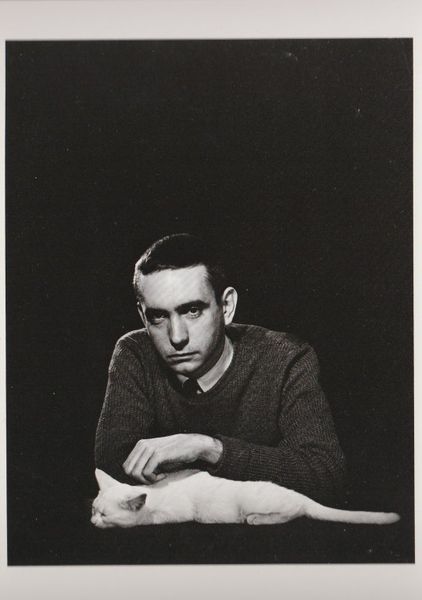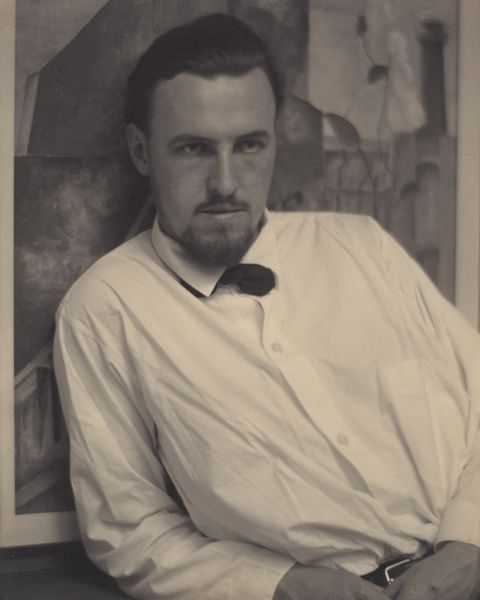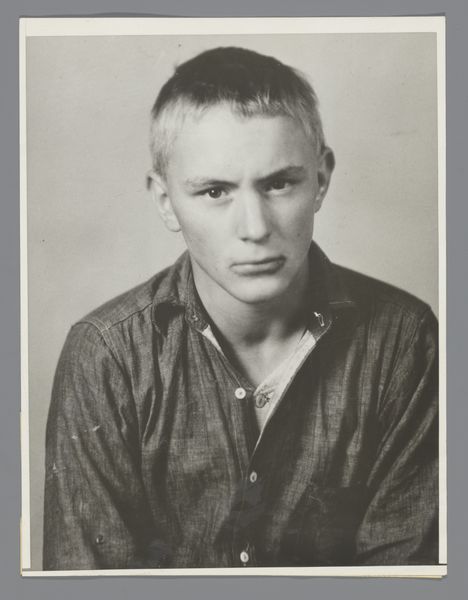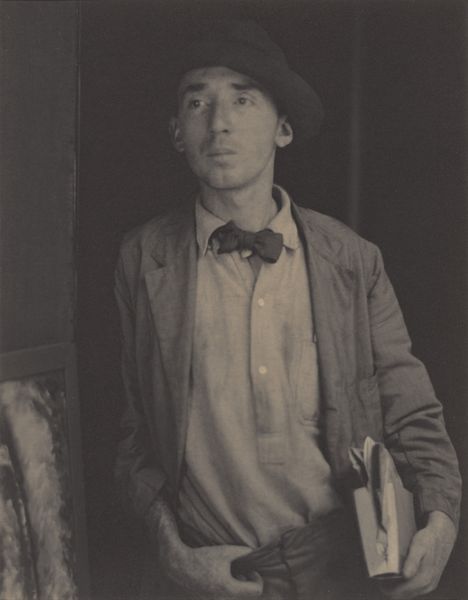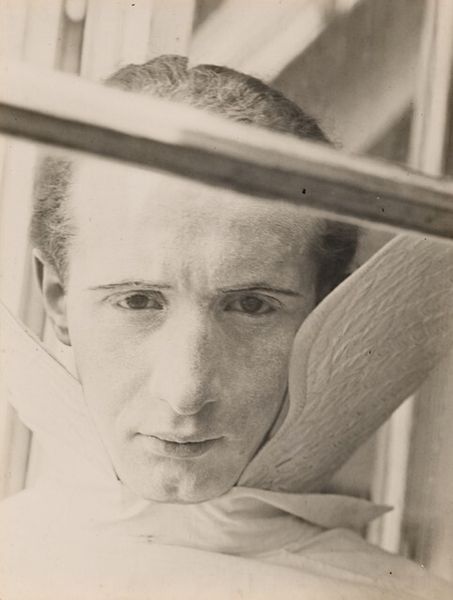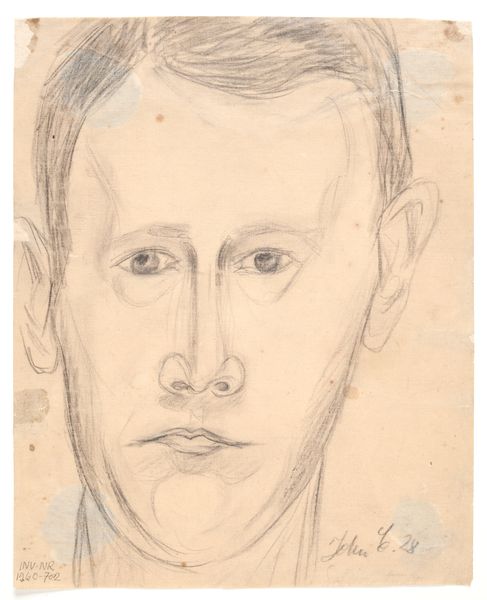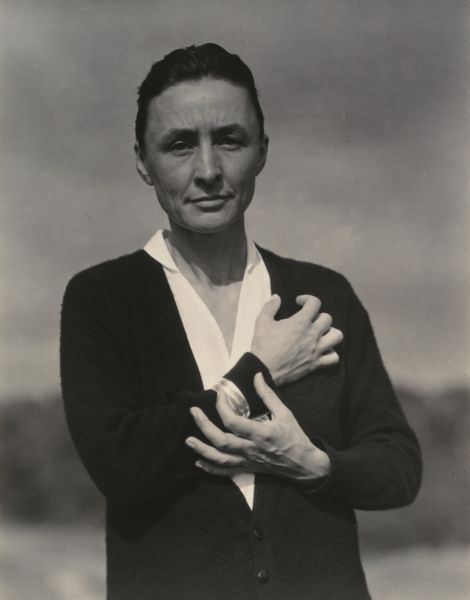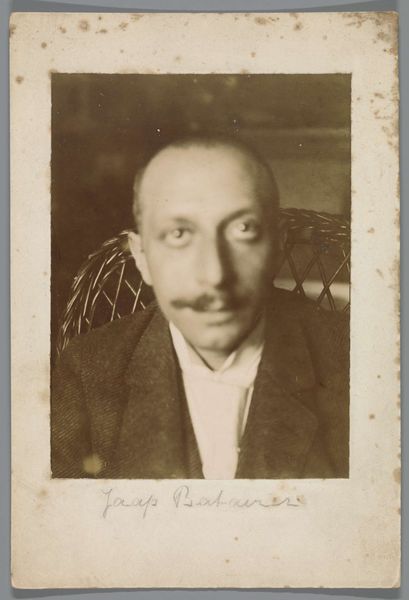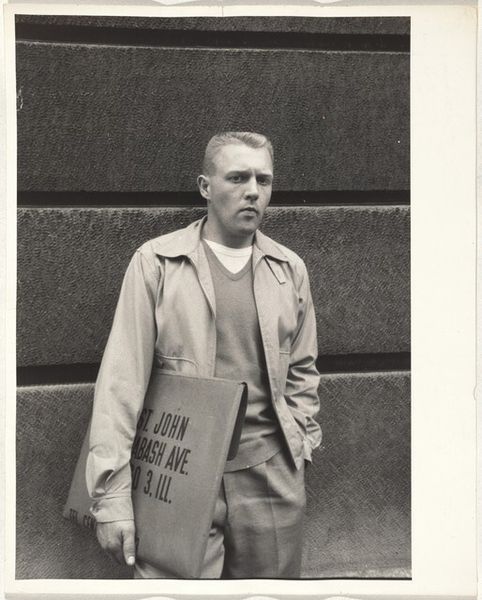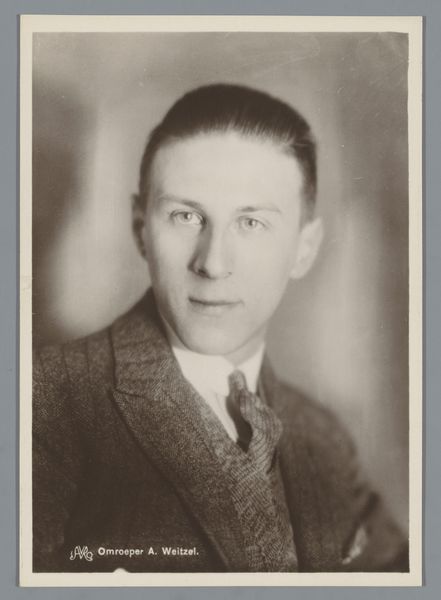
photography, gelatin-silver-print
#
portrait
#
photography
#
gelatin-silver-print
#
ashcan-school
#
modernism
#
realism
Dimensions: height 240 mm, width 200 mm
Copyright: Rijks Museum: Open Domain
Editor: This is a gelatin-silver print called "Portret van Robert Walker," created in 1937. Something about the subject’s direct gaze and the very plain clothing creates a feeling of quiet dignity. How do you interpret this portrait? Curator: It is very evocative, isn’t it? This photograph immediately situates itself within the socio-political landscape of its time. Look at the man’s clothes: denim overalls paired with a more formal jacket. How does that visual juxtaposition speak to the shifting class structures and the realities of the working class during the Depression era? The backdrop too, it speaks to notions of domesticity, perhaps aspiration. Editor: That's interesting. I hadn’t thought about the wallpaper in that way. It gives off an almost theatrical air, like a stage setting. Do you see Walker as a performer? Curator: Perhaps not a performer, but certainly a participant in a staged reality. These photographs were often created as documentary evidence. The question, though, is who is crafting that narrative, and for what purpose? Does this image, intended perhaps as a record of social reality, risk romanticizing or even essentializing the subject's identity? Editor: I see what you mean. By focusing on clothing and setting, it's easy to create a story, but whose story is it, really? Curator: Exactly. Think about whose voices were – and still are – amplified, and whose are silenced. That question, applied to images like these, can lead to a deeper understanding of both history and our present. Editor: This makes me think a lot harder about documentary photography and how easily a perspective can be unintentionally – or intentionally – shaped. Curator: It is critical to view images such as these with an actively critical lens. Never take representation at face value. Whose truth is being told?
Comments
No comments
Be the first to comment and join the conversation on the ultimate creative platform.
